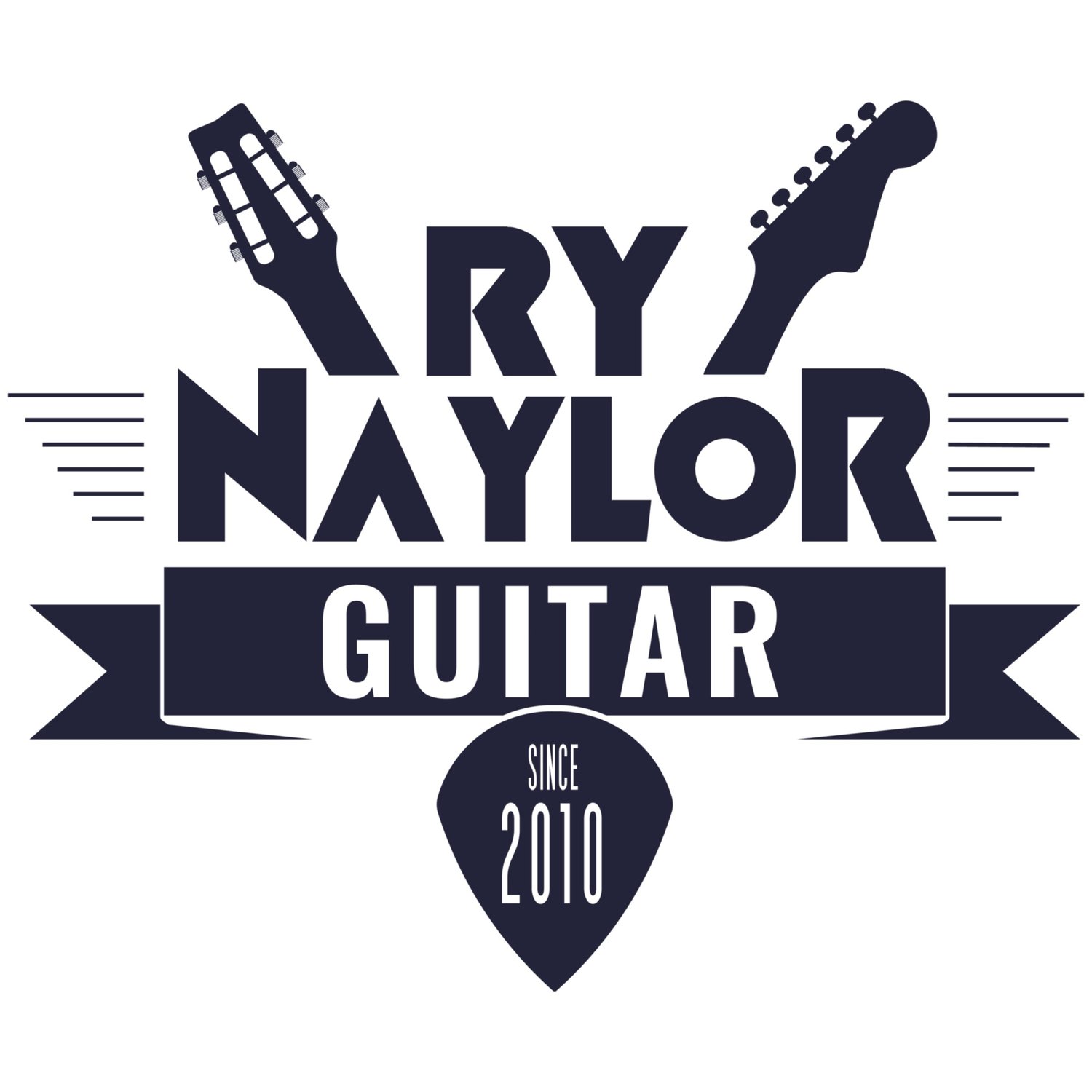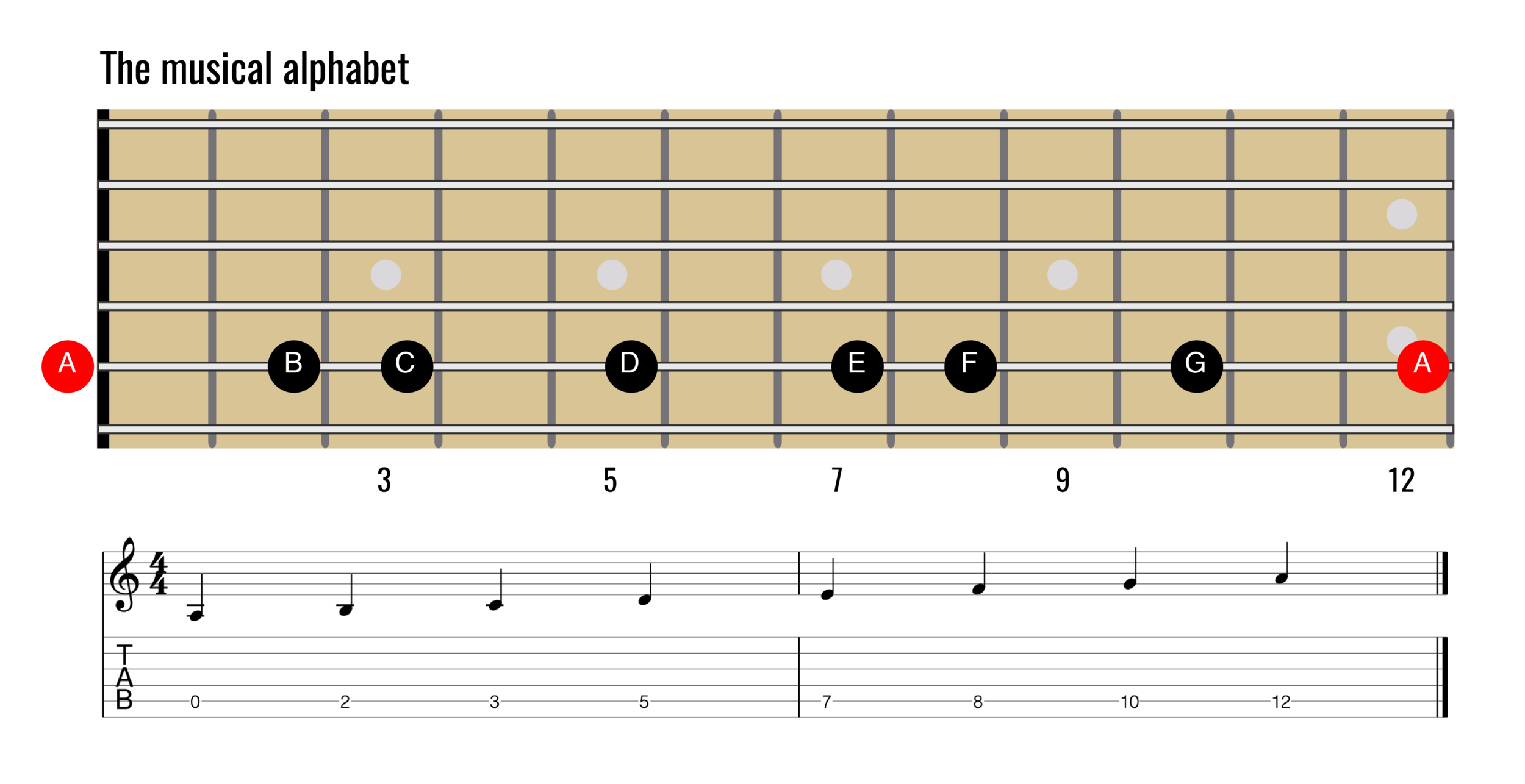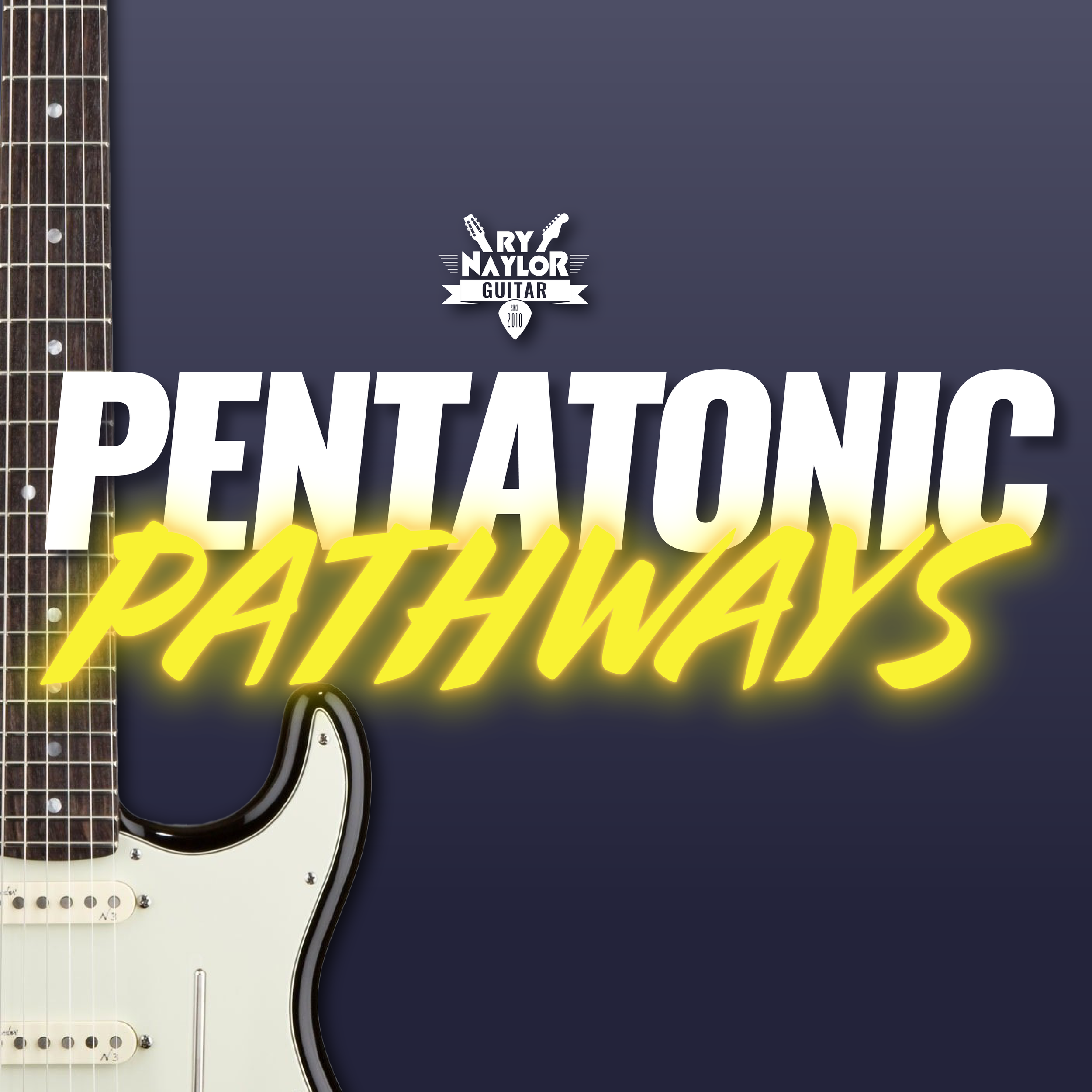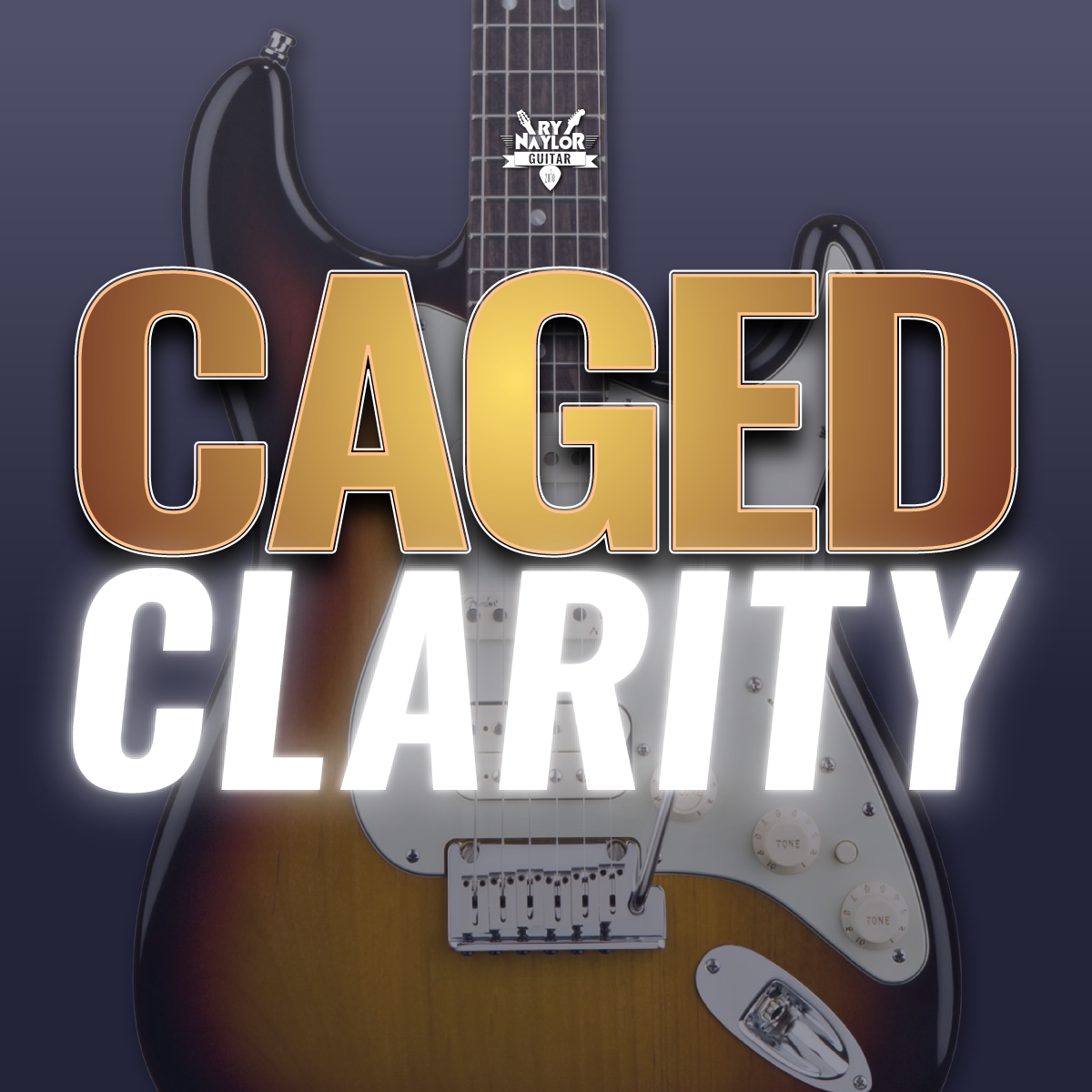Naming the guitar notes with the musical alphabet
/There’s no better place to start your guitar theory journey than learning how we name guitar notes using the musical alphabet.
Firstly what exactly is a note?
A note is a single sound that has a recognizable pitch (high or low) and duration. Any time you pluck a guitar string you’re playing a specific guitar note. When strumming chords you’re playing a group of guitar notes at the same time.
A note is therefore the sound and also the symbol that you see written in sheet music.
Tuning the guitar with notes
You’re immediately introduced to the idea of notes when you learn is how to tune your guitar.
The 6 guitar strings can be named by number (thickest string 6 to thinnest 1) but, most commonly, guitar tuners use letters.
Tuning the guitar with the musical alphabet
String 6 is E
String 5 is A
String 4 is D
String 3 is G
String 2 is B
String 1 is E
These letters come from the musical alphabet.
The Musical Alphabet
The musical alphabet begins in the same way as the standard English alphabet:
A B C D E F G
However, the musical alphabet only contains seven letters. After G you return back to an A, but this A will be higher in pitch than the A upon which you started. The sequence of letters repeats over and over getting progressively higher in pitch.
This repeating sequence can be seen on the piano keyboard. The white keys are the musical alphabet, going higher in pitch as you move from left to right. Notice how the white keys and black keys keep repeating in the same way.
The musical alphabet on the piano keyboard
I know we’re guitarists but the piano is a great way to learn and explore theory concepts. I’ll be using it a lot as we introduce new ideas.
Memorizing the musical alphabet
It’s best is think of the musical alphabet as a continuous circle, like a clock face. Moving clockwise makes the notes higher in pitch, and moving counterclockwise makes the notes lower.
It’s easy to say the alphabet in order, but you also need to have it memorized backward as music can be played in either direction. Try saying a few rounds of each circle to get used to this.
The distance (or interval) between A to A (or B to B, C to C…) is known as one octave. The prefix oct- refers to the eight notes that make up an octave (A B C D E F G A).
FYI, there are two octaves between the open string 6(E) and 1(E): that’s twice around the musical alphabet circle.
The problem with the guitar fretboard
Take another look at the piano keyboard. How many keys would you play from A to the next A? It spans eight white keys, but there are also the black keys to consider.
You can see the potential problem for guitarists trying to play up and down the musical alphabet when you map it out on a guitar string. Let’s use string 5(A) as it’s tuned to the note A.
An octave is eight musical alphabet letters, but an octave on the guitar fretboard spans the distance of 12 frets horizontally on one string. You have to take into account those black keys as well!
We’ll be looking at the distances between each note in the musical alphabet in the next lesson.
Your to-do list
Ensure you’re confident with the musical alphabet order, forwards and backward.
Memorize the open string tuning notes: my favourite mnemonic to teach students is: Eddie Ate Dynamite Good Bye Eddie
Key Terms
Note: 1 A single sound that has a recognizable pitch and duration 2 A written key or symbol representing that sound
Pitch: The relative highness or lowness of a musical sound, determined by its frequency (number of vibrations per second - measured in Hertz (Hz))
Interval: An interval is the distance, or difference, between two notes. The notes may be sounded simultaneously, making a harmonic interval, or they may be sounded one after another, as in a melody, making a melodic interval.
Octave: The interval of an 8th. The distance between the first and eight notes (which share the same letter-name) of any diatonic major or minor scale.















